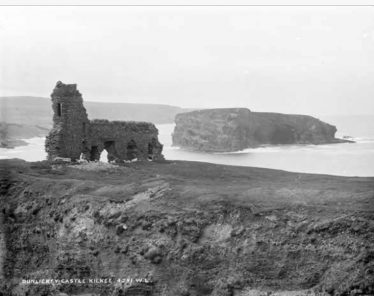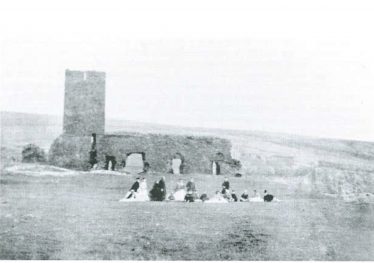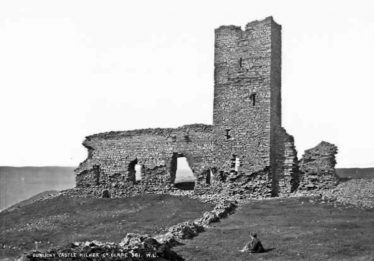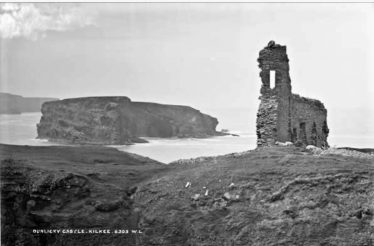Dunlicky Castle





Dunlicky Castle ” the fortified place on the rock ” is no more as by 1963 the last of the southern wall of the tower fell away and now only a few mounds mark it’s past glories.
Location.
Dunlickey castle is located 3 1/2 miles Southwest of Kilkee in the town land of Moveen West in the parish of Carrigholt on the Loop Head Peninsula on the Atlantic side of the peninsula.The castle was built on the site of a promontory fort with a single earth bank and fossa protecting the land access to Castle Point. The castle was built in the mid 1500s as a tower house on the landward flank with steep cliffs of over 60m on the other three sides
There is evidence of a earth bank running around the cliff sides which was probably both a defensive as well as a protective measure to stop people and animals been swept off by high winds.
Ownership.
By 1574 a list of castles owned by Turlough McMahon’s had Carrigholt as his main castle with castles also at Cloughaunsavaun , Moyarta and Doonlicka.Only Carrigholt is left standing.
Turlough McMahon died in 1595 and ownership passed to his son Teige McMahon. Teige’s rebellion against Queen Elizabeth started in 1598 and he retook possession of Dunlickey as it had been in the hands of Owen Mac Sweeney of Kilkee. After Teige’s death and failed rebellion in 1602.,DanielO’Brian took possession of Carrigholt and Dunlickey and the lands of Mac Mahon. Dunlickey castle remained in the hands of the Mac Sweeneys until the mortgage ran out in 1609. O’Brien’s rights to the former Mac Mahon’s lands was confirmed on his elevation to the peerage in 1604 and reconfirmed in 1622.
By the time of the ‘Edenvale Survey ‘ in 1675 the castle was described as been in ruins. By the early 18th century it was sold to the Amory family from Cambridge who in turn sold it to John Westrop of Lismehane in 1753. The site finally came into the ownership of the tenants under the land acts before 1913.
Design.
The castle stood on the narrow neck of land and a wall or rampart extended to the cliff on either side. The wall was 6.1m high and 1.8m wide. There was apertures in wall in short distances to each other through which the castle soldiers fired without exposing themselves. There was also a iron door which survived until 1770. In the centre of the wall was a high narrow tower.
The mortar of the castle and walls appeared to have been made of burnt shells along with sand and large gravel instead of proper limestone. This was the reason of the abandonment and collapse of the castle. So the castle was only lived in for a short time mainly by the Mac Sweeney family and retainers for the O’Briens when by the mid 1700 it was uninhabitable.
Today:Castle point is now used as a favoured spot for mackerel fishing using strong long rods from the cliffs to the sea over 6m below. It can be very dangerous in strong winds and a few fishermen have lost their lives.




No Comments
Add a comment about this page